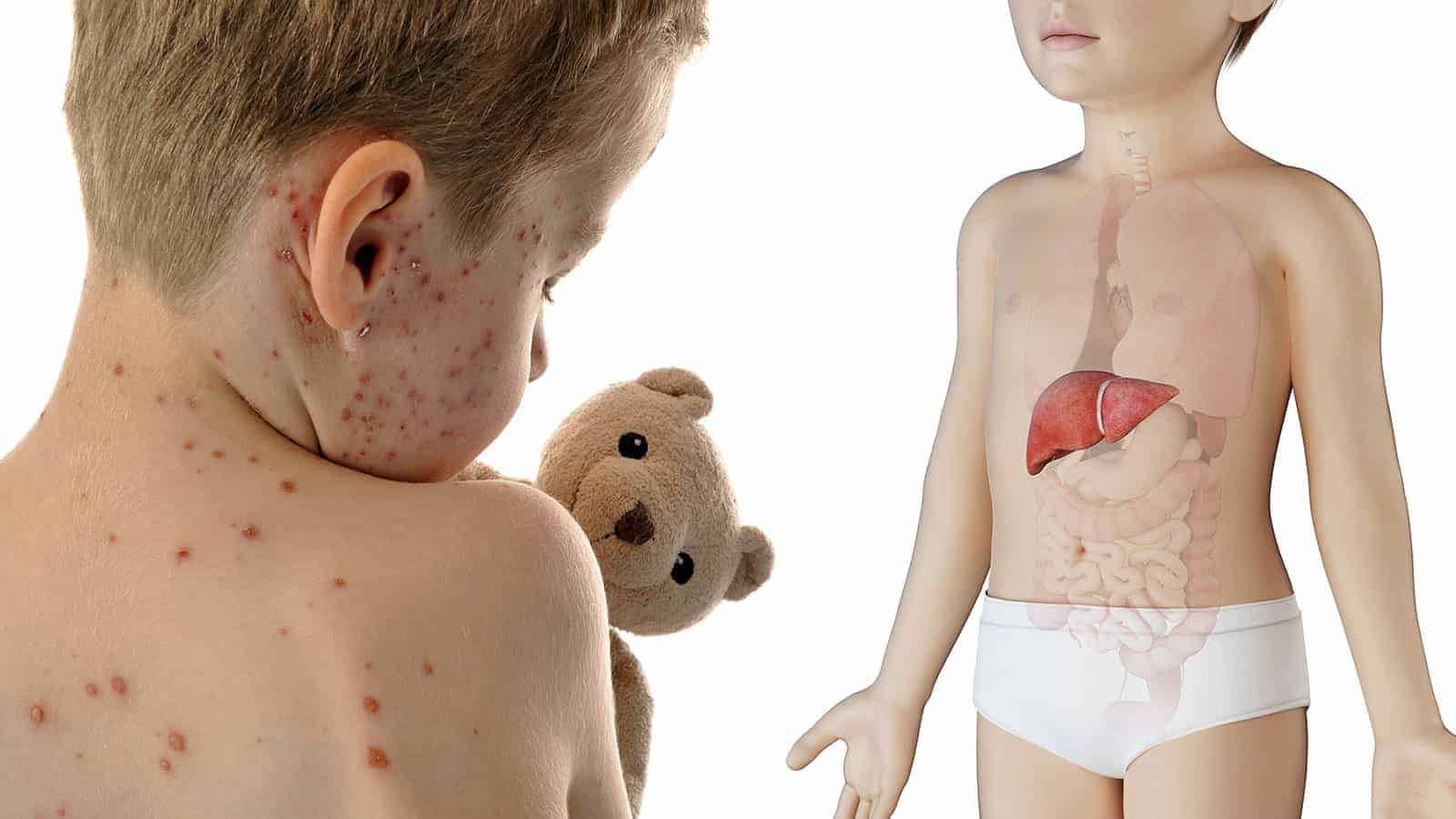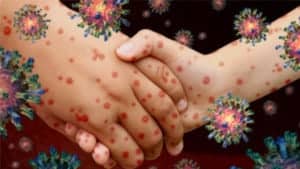All parents are on high alert with regard to how to keep our children safe and protected from potential infection. Reye’s syndrome is a rare but serious complication that arises after a viral infection causes irreparable damage to both the brain and the liver.
Reye’s syndrome occurs most frequently in children who recently suffered a viral illness. Illnesses such as chickenpox and flu are triggers for this disorder. Doctors report this condition in cases where parents used aspirin to treat fever or other symptoms. Children will often feel headaches and body aches during an infection. Thus, parents alleviate that pain with aspirin.
The Onset of Reye’s Syndrome Symptoms
As Reye’s Syndrome progresses, symptoms can develop rapidly and overtake a person within a matter of hours. A first symptom that commonly appears is vomiting, followed by extreme irritability and aggressiveness. Children may become lethargic, confused, and may even experience seizures and slip into a coma. While there is no cure for Reye’s, early detection of symptoms is key, and medical intervention is necessary to avoid potentially life-threatening complications.
Doctors Order Tests to Diagnose the Disease
There a number of tests that can determine if your child has Reye’s Syndrome. A spinal tap can rule out other brain and spinal cord infections. And a liver enzyme test can determine if the liver suffered damage from this condition. CT scans can accurately measure and record brain activity to determine if the normal activity is taking place. Further, doctors order skin biopsies to determine if a child has a fatty acid oxidation disorder contributing to the illness. Knowing what you are dealing with is the key to prompt treatment that can reduce long term complications.
Causes of Reye’s Syndrome
Medical professionals are not positive about what triggers or causes Reye’s syndrome. Several factors may play a role in its development. It can occur more frequently in those children and teens who have a fatty acid oxidation disorder.
Other medicines to steer clear of before, during, and after viral infections include Bismuth subsalicylate and topical products containing wintergreen oil. It is also thought that exposure to certain chemicals like herbicides and paint thinners can trigger the development of Reye’s syndrome.
Treatment of The Disease
As the occurrence of Reye’s syndrome is so rare, there is little information about it that sheds insight on how to prevent its occurrence. That being said, most of our energy is devoted to treating and alleviating symptoms before they become life-threatening. Doctors will make sure children maintain balanced electrolyte levels and that they stay well hydrated. Careful monitoring of the heart, liver, lungs, and respiratory system will continue for the duration of the illness to ensure that the patient remains stable. Children who experience seizures will receive appropriate medications to control their occurrence and minimize the damage from seizure activity in the brain.
Some common medications used to treat Reye’s include:
- Insulin to control glucose metabolism
- Use of steroids to reduce brain swelling
- Diuretics to get rid of excess fluids
In some cases, a respirator may be necessary to regulate breathing that is erratic or too slow. The earlier that Reye’s is diagnosed, the better the outcome will be for a patient. If it is not caught and effectively treated, a patient could experience permanent brain damage or death.
Preventing Reye’s Is Key
Reye’s syndrome became less common in recent years because medical professionals and parents alike are more aware of the implications of giving aspirin to children.
Furthermore, some hospitals and clinics suggest that newborns undergo screening for fatty acid oxidation disorders. Children who are positively identified as having this type of disorder are to refrain from using products containing aspirin or salicylic acid.
Choosing instead to offer your child natural fever reducers can help reduce the risk of Reye’s in children who contract chickenpox or influenza. If for some reason your child has an ongoing prescription for a drug containing aspirin or salicylic acid, make sure he is up to date on vaccines for both chickenpox and influenza to reduce the risk of development of Reye’s.
Prevention and early detection of Reye’s syndrome are essential if you are to avoid long term health consequences and possible death. Knowing what signs and symptoms to look for is essential if you are to remain proactive about safeguarding your children from this rare but serious complication.
10 Symptoms of Reye’s Syndrome
According to the National Institute of Neurological Disorders and Strokes, watch for these telltale signs that you may be dealing with Reye’s.
1. Diarrhea
Diarrhea is one of the first signs and symptoms that you may be dealing with Reye’s. Most prevalent in young children, look for loose and watery stools when changing diapers and training pants. This may be a sign that you are in for more severe symptoms as the disease progresses. Reye’s is initially difficult to diagnose, as initial symptoms may also be indicators of other childhood illnesses. Taking into account everything that your child is experiencing will help you to determine if more medical intervention is needed.
2. Rapid or shallow breathing
Another of the most prevalent in young children, rapid shallow breathing and rapid heartbeat are concerning symptoms your child can develop. You may see periods of shallow breathing that look much like hyperventilating during different times of the day. And periods of respiratory distress might grow longer and more severe. If you see that your child is having difficulty breathing, do not hesitate to seek medical attention as soon as possible to avoid more severe complications.
3. Vomiting
This symptom generally shows itself early in the progression of Reye’s, but it is more common among school-age children and teenagers. Persistent and recurring vomiting that does not have clear links to other flu-like symptoms should be checked out as soon as possible to avoid severe dehydration and other issues.
4. Unusual fatigue and sleepiness
Another symptom that is quite common among school-age children and teens, extreme fatigue and sleepiness can be hard to diagnose correctly. If this extreme fatigue and drowsiness occur in tandem with other aforementioned symptoms, you might want to have your child tested for Reye’s.
5. Lethargy
Many people assume that lethargy and fatigue are one in the same, but lethargy takes fatigue to the next level. A child who is lethargic has trouble moving and speaking, and the smallest exertion in physical movement is nearly impossible to achieve. Lethargy and drowsiness may be one of the initial indicators that Reye’s is present, or it may show itself later in the progression, when symptoms may be getting harder to control.
6. Irritability and mood swings
One of the major benchmarks for identifying Reye’s is irritability and volatile mood swings. They may lash out over ordinary situations and be unable to control their emotions, seeming irrational and volatile in normal circumstances. If this symptom is paired with other physical symptoms like diarrhea and vomiting, seek medical attention and possible intervention, if necessary.
7. Temporarily paralysis
One of the most concerning symptoms of Reye’s is temporary paralysis. It starts in the extremities as weakness and moves inward, causing troublesome symptoms and limitations on movement. Children may experience moments of panic when this symptom presents itself, thinking that symptoms will be permanent. It is important for caregivers to remain calm and reassure them that when medical care is sought, the issue should subside.
8. Confusion
As this childhood illness progresses, it can lead to cognitive decline. Prolonged periods of delirium and confusion take hold and lead to additional stress on child and caregiver. Many children who are recovering from Reye’s undergo therapy to manage their anger over the condition. They might also express feeling overwhelmed and defeated as a result of their cognitive compromise.
9. Seizure activity
One of the more problematic symptoms of this childhood illness is the presence of seizures, muscle spasms and contractions that range from mild to severe. If you see your child beginning to develop seizure activity, it is important to safeguard your child. Furthermore, surround your child with proactive, caring providers in the event that they suffer an attack.
10. Loss of consciousness
A late-stage symptom of Reye’s is the gradual, then total loss of consciousness. A child gradually begins to lose elements of his/her perception, then gradually slips into a deep state of sleep. If you don’t seek medical promptly, this loss of consciousness can lead to brain death. As a parent, you can prevent this devastating event. But you must what to look for and when to seek medical treatment to halt symptoms.
Final Thoughts: Awareness of Reye’s Disease is the Best Prevention
So parents need to be on the lookout for any childhood illness that could develop. Of course, it is essential that we remain vigilant and proactive as we monitor for signs and symptoms of Reye’s syndrome. Doing so could potentially save your child’s life. Stay alert and healthy this season and beyond!





















